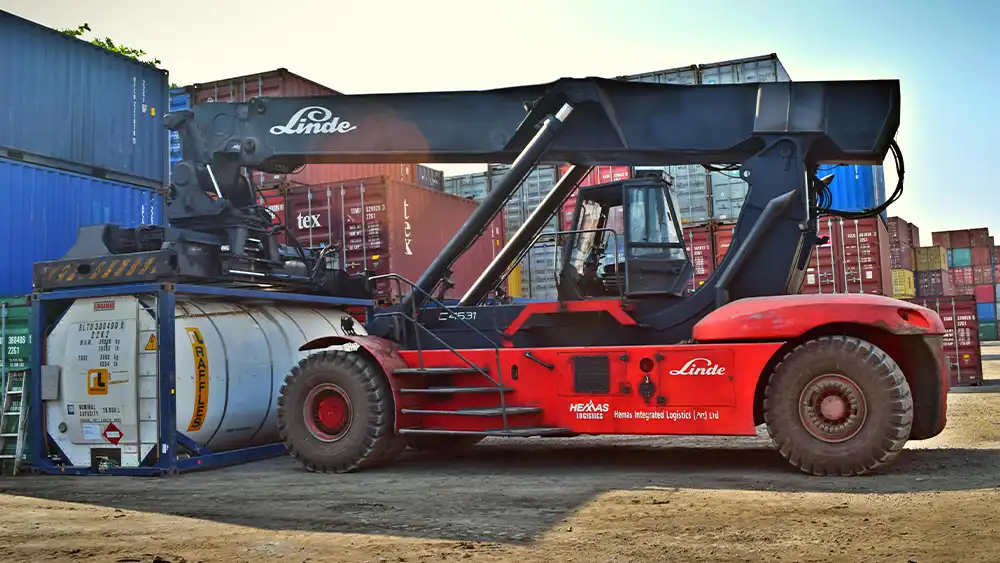Tips to Improve Heavy Lifting Safely in Your Workplace

Workplace safety is crucial for maintaining productivity, reducing injury risks, and ensuring employee well-being, particularly when heavy lifting is involved. Whether it’s a warehouse, a construction site, or an office with occasional heavy objects, improper lifting techniques can lead to muscle strains, back injuries, and even long-term health problems. Understanding the right strategies for lifting, combined with regular safety training and equipment, can significantly reduce the chances of injury.
Implement Regular Safety Training
Safety training is a key part of any injury prevention program, especially in environments where heavy lifting is common. To implement regular safety training, companies like RUD Australia and several others can provide hands-on workshops, ensuring employees are well-versed in proper lifting techniques and the safe use of equipment. Employees need to be educated on best practices for lifting, how to use equipment safely, and what to do in case of an emergency.
What Should Be Included in Safety Training
- Proper Lifting Techniques: Provide hands-on training where employees can practice proper lifting forms under supervision.
- Equipment Usage: Ensure employees are trained on how to operate lifting equipment such as hoists or forklifts safely.
- Ergonomic Best Practices: Teach employees how to set up their workspace or lifting environment in an ergonomic way to reduce strain on their bodies.
- Emergency Procedures: Make sure employees know what to do in the event of an injury or accident, including how to report incidents and seek help immediately.
Regular training sessions keep lifting safety top of mind and allow employees to refresh their skills.
1. Use Appropriate Lifting Gear
For heavier loads, manual lifting may not always be the safest or most efficient option. In such cases, it’s important to have the right equipment on hand.
2. Types of Lifting Gear
- Dollies and Hand Trucks: These are useful for transporting heavy or bulky objects over short distances without risking strain on the back.
- Forklifts and Hoists: Larger equipment like forklifts or hoists should be used for extremely heavy loads. Ensure that only trained employees operate this machinery.
- Lifting Straps: These help employees get a better grip and distribute the weight more evenly when lifting heavy items.
3. Keep the Workplace Organized

A cluttered or disorganized workspace can increase the risk of accidents, especially during heavy lifting tasks. Employees may trip over items on the floor, or be forced to navigate tight spaces while carrying heavy objects.
Key Organization Tips
- Clear Aisles and Walkways: Make sure that areas where heavy lifting occurs are free from clutter and obstacles. This reduces the likelihood of trips and falls.
- Designate Lifting Zones: Create specific areas for lifting tasks, ensuring these zones are spacious and equipped with any necessary tools or lifting aids.
- Store Heavy Objects Low: Avoid storing heavy items on high shelves. Keep them at a waist-high level so employees don’t have to strain themselves lifting overhead.
4. Encourage Team Lifting for Heavy Loads
Sometimes, an object is simply too heavy or bulky for one person to lift safely. In these cases, encouraging team lifting can help prevent injury.
Benefits of Team Lifting
- Reduced Strain: By distributing the weight between two or more people, the overall load on each person’s body is minimized.
- Increased Stability: With more people involved, there’s less risk of dropping or mishandling the object.
- Improved Communication: Team lifting requires clear communication between employees to coordinate the lift, ensuring that everyone is on the same page.
5. Ensure Clear Communication in the Workplace
Communication is a critical part of workplace safety, especially when employees are working together to lift or move heavy items. Miscommunication can lead to dropped items, injuries, or other accidents.
Best Practices for Communication
- Use Hand Signals or Verbal Commands: Especially in noisy environments like warehouses, using hand signals or clear verbal commands can prevent accidents.
- Check-in Regularly: Encourage employees to check in with each other before and during lifting tasks. This ensures that everyone is ready and on the same page.
- Use Signs and Labels: Mark heavy items, equipment, and lifting zones to avoid confusion and help employees handle objects safely.
6. Conduct Regular Safety Audits

Even with the best practices in place, it’s important to regularly assess the safety of your workplace to identify any potential hazards or areas for improvement.
What to Look for During a Safety Audit
- Workplace Organization: Check for cluttered areas, especially around lifting zones.
- Equipment Condition: Ensure that all lifting equipment, such as hand trucks and forklifts, is in good working condition.
- Employee Behavior: Observe how employees are lifting. Are they following the proper techniques? Is team lifting being utilized when necessary?
- Ergonomics: Look for ergonomic issues that might be causing strain or discomfort for employees.
Regular audits allow you to identify potential safety risks and address them before they lead to injury.
Conclusion
Ensuring heavy-lifting safety in the workplace isn’t just about reducing injuries -it’s about promoting a culture of well-being and productivity. By teaching proper lifting techniques, providing the right equipment, keeping the workspace organized, and encouraging teamwork, you can significantly minimize the risks associated with heavy lifting. Remember that regular safety training and communication are key elements in maintaining a safe working environment.

news via inbox
Sign up and never miss out on the latest news and updates at HighStuff




